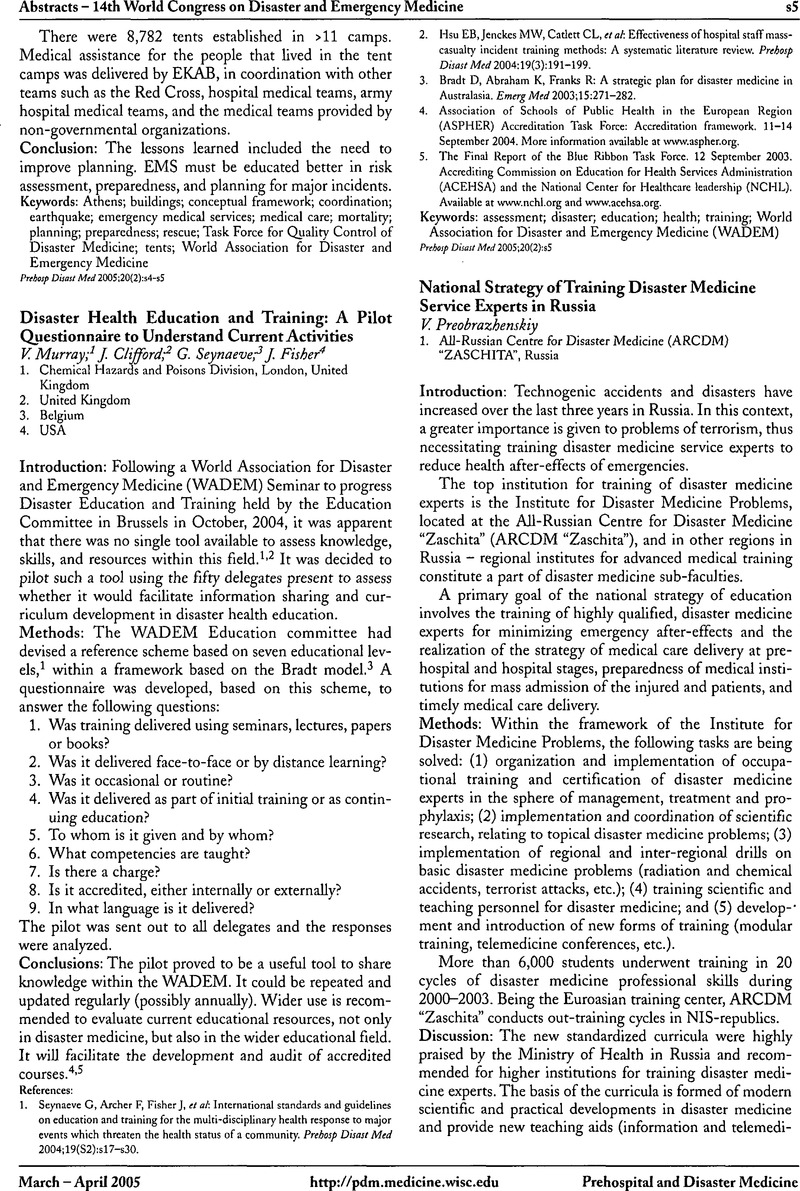No CrossRef data available.
Article contents
Disaster Health Education and Training: A Pilot Questionnaire to Understand Current Activities
Published online by Cambridge University Press: 28 June 2012
Abstract
An abstract is not available for this content so a preview has been provided. As you have access to this content, a full PDF is available via the ‘Save PDF’ action button.

Keywords
- Type
- Plenary 1: Lessons from History
- Information
- Copyright
- Copyright © World Association for Disaster and Emergency Medicine 2005
References
1.Seynaeve, G, Archer, F, Fisher, J, et al. : International standards and guidelines on education and training for the multi-disciplinary health response to major events which threaten the health status of a community. Prehosp Disast Med 2004;19(S2):s17–s30.Google ScholarPubMed
2.Hsu, EB, Jenckes, MW, Catlett, CL, et al. : Effectiveness of hospital staff masscasualty incident training methods: A systematic literature review. Prehosp Disast Med 2004:19(3):191–199.CrossRefGoogle ScholarPubMed
3.Bradt, D, Abraham, K, Franks, R: A strategic plan for disaster medicine in Australasia. Emerg Med 2003;15:271–282.CrossRefGoogle ScholarPubMed
4.Association of Schools of Public Health in the European Region (ASPHER) Accreditation Task Force: Accreditation framework. 11–14 September 2004. More information available at www.aspher.org.Google Scholar
5. The Final Report of the Blue Ribbon Task Force. 12 September 2003. Accrediting Commission on Education for Health Services Administration (ACEHSA) and the National Center for Healthcare leadership (NCHL). Available at www.nchl.org and www.acehsa.org.Google Scholar


